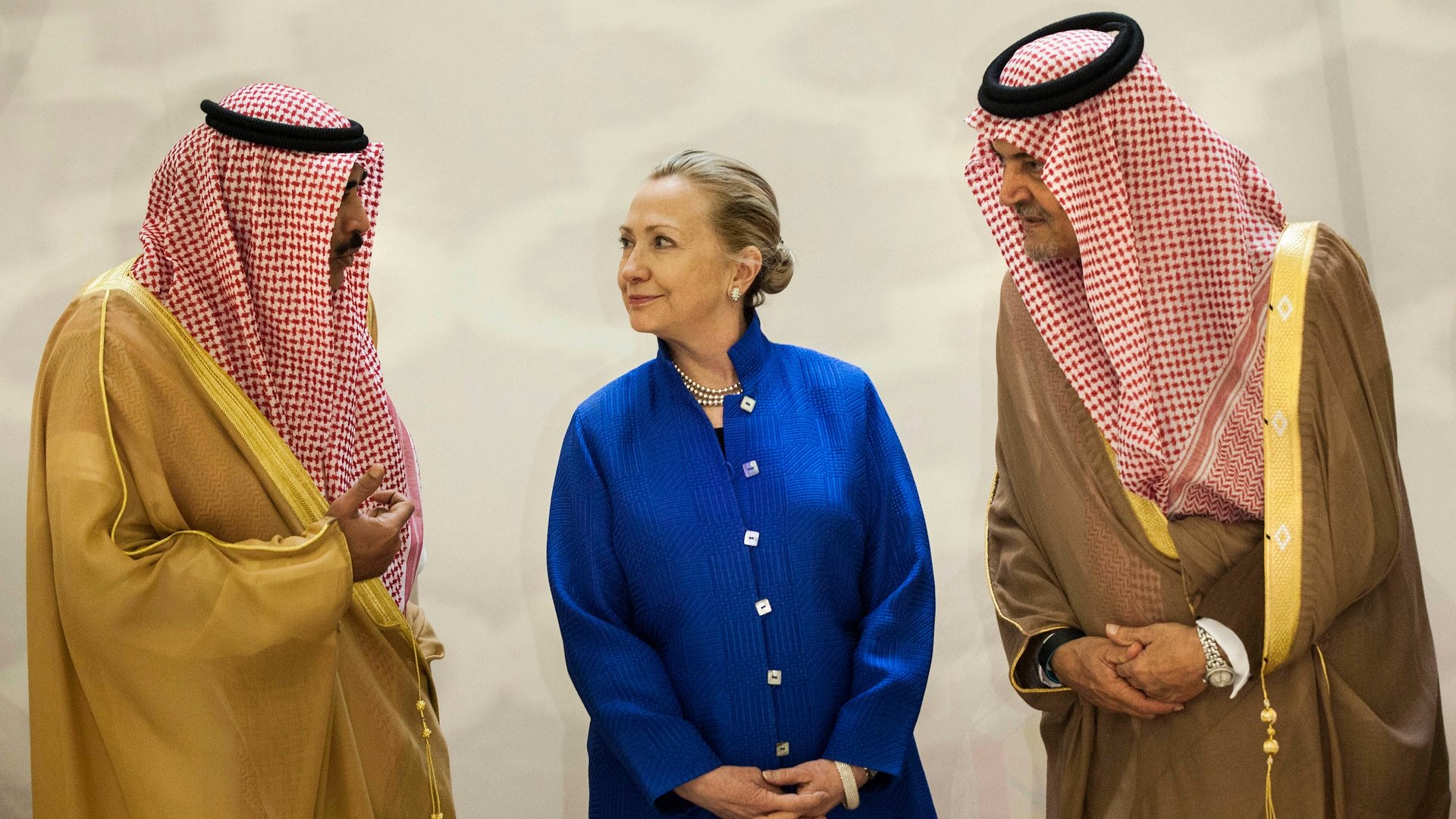A new book weighs the feminism of Hillary Clinton’s foreign policy
During her confirmation hearing to become US secretary of state, Hillary Clinton told the Senate Foreign Relations Committee in no uncertain terms, “I want to pledge to you that as secretary of state I view [women’s] issues as central to our foreign policy, not as adjunct or auxiliary or in any way lesser than all of the other issues that we have to confront.” A thoughtful and nuanced new book by Valerie M. Hudson and Patricia Leidl, The Hillary Doctrine: Sex & American Foreign Policy, evaluates to what extent Secretary Clinton has fulfilled this pledge.


During her confirmation hearing to become US secretary of state, Hillary Clinton told the Senate Foreign Relations Committee in no uncertain terms, “I want to pledge to you that as secretary of state I view [women’s] issues as central to our foreign policy, not as adjunct or auxiliary or in any way lesser than all of the other issues that we have to confront.” A thoughtful and nuanced new book by Valerie M. Hudson and Patricia Leidl, The Hillary Doctrine: Sex & American Foreign Policy, evaluates to what extent Secretary Clinton has fulfilled this pledge.
Unsurprisingly, they find many examples where Clinton’s rhetoric does not meet US foreign policy reality. Rather than simply denounce the former secretary of state for this, they try to understand what explains this reoccurring disconnect. For example, the authors contend that a component of Clinton’s hawkish support for intervening in Afghanistan, Iraq, and Libya was the belief that women’s lives would be markedly improved. Hudson and Leidl disagree, noting, “Military action in and of itself against regimes violating human rights will not protect women. If anything, it unleashes new and usually even more vicious male-bonded groups intent on stripping them of even the most basic human rights.”
It is this sort of refreshing analysis that makes this book so important, and one that I highly recommend to anybody interested in elevating women’s voices in world affairs, as well as the practicalities of day-to-day US foreign policymaking.
The “doctrine” comes from a proposition that Clinton made at the TEDWomen Conference in December 2010: “The subjugation of women is, therefore, a threat to the common security of our world and to the national security of our country.” In countries where women are chronically mistreated, or systematically excluded from leadership roles, there tends to be far greater state fragility, outbreaks and reoccurrences of conflict, and environments where extremists can flourish, including even terrorist organizations.
The quantitative and anecdotal evidence supporting Clinton’s proposition has grown stronger over the past five years. For example, we now know that the participation of women’s groups in peace negotiations increases the likelihood of reaching an agreement and implementing it, and the probability that it will last longer. When women were included in peace processes between 1989 and 2011, agreements were 20% more likely to last as long as two years, and 35% more likely to last 15 years. Additionally, women’s leadership and political participation enhances a community’s ability to resist violent extremism, and women play the most critical family role in influencing young people who are susceptible to radicalization.
The first part of the book—based on interviews with government officials like Swanee Hunt, Andrew Natsios, Paula Dobriansky, and Melanne Verveer—consists of a helpful history of how women’s issues became prominent in U.S. foreign policymaking during the 1990s. This included milestones like UN Security Council Resolution 1325, the first resolution to address the disproportionate and unique impact of armed conflict on women, as well as the role of women in conflict prevention and resolution; the publication of the first US National Action Plan on Women, Peace, and Security; and the difficulties and haphazard manner that the military and USAID have experienced in incorporating women’s issues into foreign operations.
This is crystallized in an anecdote from Charlotte Ponticelli, the state department’s senior coordinator for international women’s issues in the era after Iraqi President Saddam Hussein was toppled. Ponticelli received an email from an aide to Paul Bremer, director of the Coalition Provisional Authority: “If I gave you 15 minutes to tell me how you would spend $10 million on behalf of Iraqi women, could you send me an email in that 15 minutes?” Ponticelli quickly drafted something, sent it to Bremer’s aide, and later received the $10 million.
The authors later struggle to square Clinton’s “conspicuous silence” in the face of the brutal treatment of women by Saudi Arabia, or China’s perpetration of sex-selective abortions among Tibetans. The authors write, “one possible interpretation is that the Hillary Doctrine is in fact merely a rhetorical stance on the part of US foreign policy makers, including, apparently, Hillary Clinton herself—a position that may be jettisoned if its tenants would undermine ‘real’ American national interests in any particular case.”
The authors offer several potential explanations, including that Clinton expressing more public disapproval for the mistreatment of women might be counterproductive, draw unwanted attention to local NGOs, or result in current autocrats being replaced by worse and more backward-thinking leaders. However, the more plausible explanation comes from a quote provided by Verveer, who was Clinton’s chief of staff and later led the development of the US National Action Plan: “You know, they are sovereign nations under their own.”
The authors later note that the most important and elusive ingredient for implementing the Hillary Doctrine “can only come from the White House itself.” If a President Hillary Clinton is sworn into office on Jan. 20, 2017, then there will be no more bureaucratic hurdles preventing the fuller implementation of the Hillary Doctrine. We would only learn if it is indeed a rhetoric, or the basis upon which US foreign policy is developed and implemented.